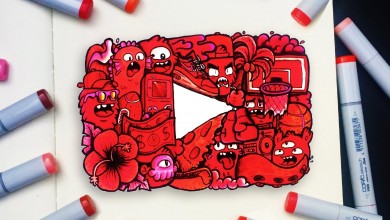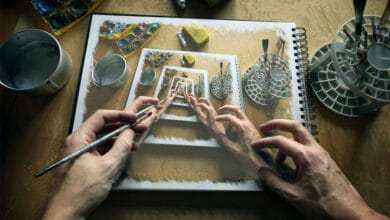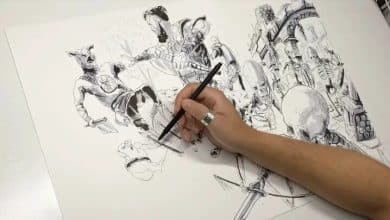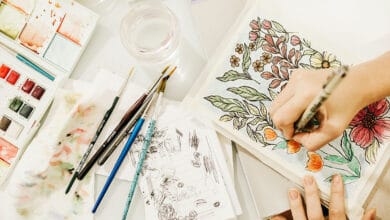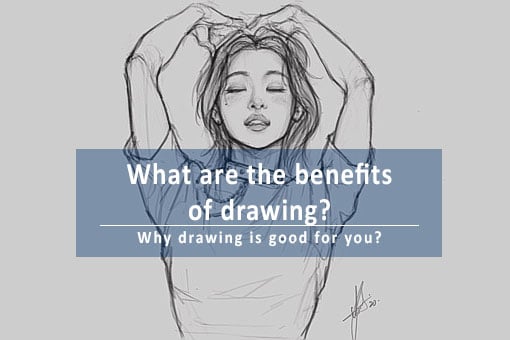
Remember when you were a child? Drawing was certainly one of your favorite pastimes, and it was rare to see you without a marker or pencil in your hand! After a certain age, few people continue to engage in this creative activity. However, drawing has many advantages! Ever thought that drawing can do wonders on your health? Well, let us share with you in 2022 some examples on what are the benefits of drawing and why drawing is good for you.
Why drawing is good for you?

Is it good to draw every day?
Drawing every day is very good if you, or someone else, would want to improve your drawing skills. This is one of the best tips that is told to beginners at drawing: “Draw every day to improve! Don’t give up. By drawing every day you’ll see results soon enough and you’ll get better at drawing by even finding your own drawing style.”
Can art make you smarter?
Mind Mapping, Visual Mapping, Pattern Recognition, Zentangle, Visual Management, and so many other concepts stem from the many virtues attributed to drawing, beyond its simple visual appeal. For, if the meaning we attribute to a simple drawing or even a work of art is very often powerful, the mechanisms triggered (in its author in particular) at the time of its conception and/or realization are just as powerful, as can be its effects on our intelligence. Drawing allows the development of thought and intelligence, the improvement of concentration, and information retention capacities.
![Why drawing is good for you? What are the benefits of drawing? [SOLVED] 2024 Slide](wp-content/plugins/revslider/public/assets/assets/dummy.png)





By drawing we stimulate several parts of our brain. We tend to see things differently which can make us smarter.
Psychological benefits of drawing

Why do we like to draw so much (and how does drawing stimulate our brain)? Neuroscientists have answered these questions for us.
Why do people like drawing?
When we draw, dopamine is released in our brain. This dopamine is involved in the “reward” process. It puts us in a state of well-being and joy.
It is the simple act of creating through drawing that triggers this pleasure. So you don’t have to be an accomplished artist to benefit from these effects.
What drawing does to your brain?
Drawing is a brain stimulator. When we analyze the brain of a drawer, we observe that many areas are activated and interact:
- Cerebellum: involved in movement
- Frontal lobe: reasoning, planning, movement, emotions, problem-solving
- Parietal lobe: movement and orientation, spatial relationships, recognition, perception of stimuli, creativity
- Occipital lobe: vision, visual processing
- Temporal lobe: perception and memory
Drawing is therefore an excellent brain stimulator and is really good for your brain.
![Why drawing is good for you? What are the benefits of drawing? [SOLVED] 2024 Slide](wp-content/plugins/revslider/public/assets/assets/dummy.png)





Why is drawing good for mental health?
Not only does drawing stimulate several parts of the brain but it is also really good for our mental health because it affects our mood in a good way. Indeed, drawing represents a true therapy of well-being, an effective anti-stress, and a source of endless creativity.
Art and drawing in general also open a door to your unconscious. According to researchers, this is the “Alpha state”: you consciously draw a picture, but at the same time, an unconscious part of the brain is activated. In other words, drawing or painting allows you to express and release buried emotions such as disappointment, fear, or anger following a tragic event, or aggression for example. This is also the case with other forms of therapy such as music, prayer, or meditation. Moreover, this wellness therapy is widely used to improve the health of a patient, following a physical illness or emotional pain. Indeed, the patients free themselves from their negative emotions by drawing, finding a certain inner peace, and gaining the strength to better face reality.
Drawing makes room for more positive thoughts.
When we chase away negative thoughts and emotions from our hearts and mind, only positive feelings will naturally remain. And this is what happens when we draw.
What are the 5 benefits of drawing?

Many people spend hours drawing as a hobby and some don’t even know the benefits of drawing. Drawing has many advantages, however, we will list only the top 5 that you should know in 2024:
1. Develop your creativity
Like a muscle, creativity is stimulated and maintained over time. Among the activities recommended to develop this faculty, drawing is in good position! Faced with a blank sheet of paper, your imagination is activated to find ways to fill it. You don’t need to be gifted, you just have to let yourself be carried away by your desires and emotions of the moment. Once you are used to this exercise of reflection and inventiveness, it becomes easier to find innovative ideas and original solutions to a problem, whether in your professional or personal life.
2. Free yourself from stress
A 2016 study conducted by researchers at Drexel University in the United States studied the level of cortisol – the hormone responsible for stress – of thirty-nine adults aged 18 to 59. They were asked to practice an artistic activity, such as drawing, for forty-five minutes. The result: it appeared that the cortisol level had decreased for 75% of the participants during this creative session. So if you’re feeling anxious, forget the cigarette and grab a paper and pencil instead! – More
![Why drawing is good for you? What are the benefits of drawing? [SOLVED] 2024 Slide](wp-content/plugins/revslider/public/assets/assets/dummy.png)





3. Reconnect with the present moment
Between our career and our family life, our mind is constantly occupied by multiple tasks that prevent us from being in the here and now. What if we took the time to (finally) enjoy the moment, without thinking about the file due by Friday and the errands we have to run? Drawing means leaving the past and the future in their place to focus on the present moment. Our worries and anxieties no longer exist, only the movement of our pencil on the white page counts. An exercise that is similar to meditation!
4. Keep your brain in shape
When we draw, our brain is active. We use our memory, our imagination, our motor skills… If practiced regularly, this activity could help fight against certain pathologies such as dementia. Drawing is even used in hospitals and retirement homes to help people with Alzheimer’s disease to recall their memories. – More
5. Expressing yourself
It is not always easy to put into words what you are feeling. Art, and drawing in particular, can be a way of expressing emotions in a different way, without censorship. Through shapes and colors, it is possible to express an infinity of sensations and feelings, sometimes unconscious. A tool used in art therapy to overcome, for example, a difficult trial or an illness.
Why is art so important?

Take a look around you. You’ll see that art is everywhere. Whether it’s in exhibitions, portraits, murals, or even covers. This omnipresence of art questions the roles that art has to play in the daily life of men and its importance. And these roles are the key to measuring the importance that art has for man. This is one of the oldest ways of expression of the man.
Is art useful?
Neurosciences teach us that art stimulates intimate and deep emotions but also that their practice develops the cerebral capacities of children.
Beyond that, it first satisfies an aesthetic need by providing a disinterested satisfaction, the opposite of primary needs. The feeling of beauty is subjective and linked to pleasure. It is different from one culture to another as from one person to another. The formation of taste, which remains specific to each person, implies an education by an open-mindedness which requires to accept various explorations of the world of the art and the creation.
![Why drawing is good for you? What are the benefits of drawing? [SOLVED] 2024 Slide](wp-content/plugins/revslider/public/assets/assets/dummy.png)





Perhaps it is possible to live without art, but beauty transports thought into another sphere of the intellect. The setting in play of the imaginary allows escaping from the real, to discover and to accept other fields and other concepts, as the discovery of work, without prejudice, questions its own vision of the world.
Art is also a creator of values in which, according to one’s tastes and culture, one recognizes oneself and forms a group. It can be aesthetic values or values of meaning that we share and that create a common experience.
In conclusion
Our brains love it when we draw. Let’s not deprive ourselves of this great tool for self-fulfillment and always have something to scribble on. Drawing has many and many benefits as you read. It is really good for our brain and our mental health. It helps us get smarter and express ourselves in a unique and artistic way that can touch many souls.
So in summary, is drawing good for us? In one word. Absolutely.
